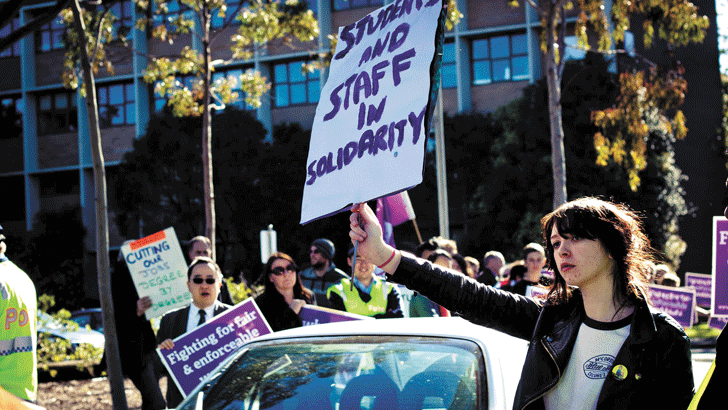Access to university is a class question

If you are from a working class background, you are only one-third as likely as children of the middle class and the rich to get into university.
A 2008 Melbourne University study found that students from the poorest 25 percent of society made up just 15 percent of uni students, while 40 percent came from the richest 25 percent of the population.
As some institutions become more elite, the class divide grows. In the prestigious Group of Eight universities, more than 55 percent of the total student population comes from the richest quarter of society, and the poorest quarter makes up barely 10 percent. In postgraduate and professional degrees it’s even worse.Working class people are also less likely to finish high school. Only 59 percent of students from the poorest quarter of the population finish year 12, as opposed to 78 percent from the richest quarter.
The lack of a high school certificate is not the sole obstacle to working class students’ entrance into higher education. The biggest barriers are the financial difficulties, the need to work part-time and balance other responsibilities with study. Without material assistance, the idea of entering higher education would be laughable for large numbers of students from poorer backgrounds.
And here is one of the rankest aspects of the federal government’s $2.3 billion planned cuts to education: the complete abolition of start-up scholarships. These are grants of $1,000, ostensibly to help students buy textbooks and other amenities, but in reality used by almost everyone to pay for rent, food and transport.
A university review found that nearly 40 percent of equity scholarship recipients said the money was essential not only in getting them to university, but in enabling them to stay there. Now the grants on which the largest number of students depend are set to go.
Dropping out
Where drop-out rates are highest, so too is the proportion of students from working class backgrounds. For instance, at Southern Cross University in Lismore, drop-out rates exceed 30 percent. The main reasons given are work and family-related.
Rates are similarly high at Victoria University, Murdoch University and the University of New England. At Batchelor Institute of Indigenous Tertiary Education in the Northern Territory, well under 50 percent of Indigenous students complete their degrees. On the other hand, a 2010 study found that only at Melbourne University and ANU are drop-out rates for first years below 10 percent.The main factor leading students to drop out is the difficulty of balancing work and other responsibilities with study – a constant concern for most students from working class backgrounds.
Help?
The Australian government’s main initiatives to “improve” education have been the Tertiary Education Quality and Standards Agency and the website MyUniversity. The former is billed as “a new national regulator … developing universal quality assurance standards”, while MyUniversity records the results of student satisfaction surveys and broader “institutional performance data”.
Who is this helping? Certainly not poor students, who are being driven out of their courses for reasons that have nothing to do with “student satisfaction”. In fact, student dissatisfaction is highest among high-scoring students at elite universities, for whom drop-out rates are lowest. Relating drop-out rates to student satisfaction fosters the idea that most students drop out because they want to, which puts things completely backwards, as most students who drop out want to keep studying but can’t.
The only people who benefit from such ideas are university administrators, who are given the green light to implement restructuring programs, to sack staff or cut fields of study for “under-performance” (i.e. not making enough money). This increases the divide both between rich and poor students and between the elite and the lesser known universities. Inequality is driven further by the government’s funding of universities on a per student basis. Richer universities retain more students and get more money. They are free to spend on building works and capital projects that make them more attractive to students, especially higher scoring ones, while knowing that they can retain them without improving their quality of education.
An example is Monash University, where $20 million is currently being invested in refurbishing the lawn, while the university administration cries poor and claims it has no choice but to cut hundreds of jobs and courses.
The government’s cuts are the latest step along the road of entrenching inequality in higher education. We need to fight for a better deal.